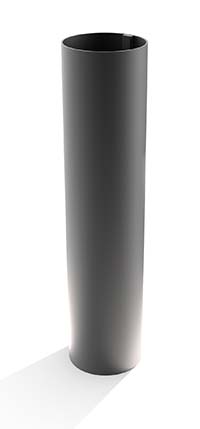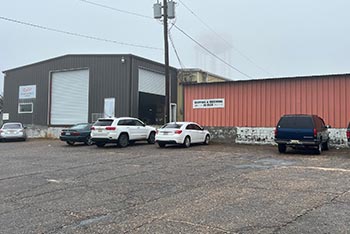Metal supply chains play a crucial role in manufacturing, ensuring that raw materials are transformed into finished products efficiently. Understanding these supply chains is essential for manufacturers aiming to operate smoothly and stay competitive. As the landscape of the metal industry evolves, so do the dynamics of supply chains, making this knowledge even more vital.
In 2024, several factors are influencing metal supply chains. Global trends, such as economic shifts and technological advancements, are changing how materials are sourced, transported, and processed. Manufacturers face new challenges, including disruptions caused by geopolitical events and natural disasters. Navigating these complexities requires a clear understanding of both the supply chain’s structure and the external forces that impact it.
Manufacturers must adapt to these changes to maintain efficiency and meet production demands. By exploring the key components and current trends in metal supply chains, manufacturers can develop strategies to overcome obstacles and seize new opportunities. Understanding these aspects will help businesses enhance their operations and ensure a steady flow of materials throughout the year.
Introduction to Metal Supply Chains
Metal supply chains are systems that move metal from its raw material stage to a finished product. These supply chains are essential because they ensure that manufacturers receive the metals they need to make their goods. When a metal supply chain works well, it helps keep production lines running smoothly and products reaching the market on time.
Understanding the importance of metal supply chains can help manufacturers plan better and reduce disruptions. For instance, being aware of global supply chain trends helps in anticipating changes in material costs and availability. Addressing these factors allows manufacturers to optimize their operations and meet customer demands efficiently.
Key Components of Metal Supply Chains
A metal supply chain consists of several critical components that work together to deliver metals in the right condition and time. Here’s a look at the main parts:
1. Raw Material Extraction: This involves mining or recycling metals to get the raw materials needed for manufacturing.
2. Processing: After extraction, the raw materials are processed into a more useful form. This includes activities like smelting, refining, and alloying.
3. Transportation: Transporting processed metals from one stage to another or to the manufacturing plants requires reliable logistics.
4. Manufacturing: This is where metals are turned into final products or parts by using various techniques like rolling. There can be multiple steps in the manufacturing process depending on the complexity of the part and it’s desired end use.
5. Distribution: The final step involves distributing the finished products to customers or businesses that need them.
Understanding these components helps manufacturers manage their supply chains more effectively and reduces the chances of delays or issues.
Global Metal Supply Chain Dynamics in 2024
In 2024, several global trends are shaping metal supply chains. For one, geopolitical tensions can impact the availability and price of metals. Countries might impose tariffs or restrictions that affect how easily metals can be imported or exported. This can cause sudden changes in supply levels, making it essential for manufacturers to have contingency plans and be mindful of the location of their supply chain. Onshoring is a recent trend driven by logistics costs and politics where manufacturers are looking for locations that are closer to home to supply them with the parts they need.
Economic factors, like inflation and currency fluctuations, also affect the metal supply chain. These variables can change the cost of raw materials and transportation, impacting overall production costs. Keeping an eye on these dynamics helps manufacturers adjust their strategies to keep their supply chains efficient.
Common Challenges in Metal Supply Chains
Manufacturers face several challenges when managing metal supply chains. One major issue is the fluctuation in raw material prices. Metals like steel and aluminum can experience significant price changes due to market demand, energy costs, and global economic conditions.
Transportation issues also pose challenges. Delays in shipping due to weather conditions, port congestion, or logistical inefficiencies can disrupt the supply chain. Manufacturers need to closely look at the logistics in their supply chain to identify risks and ensure that their materials arrive on time.
Additionally, quality control is a concern. Ensuring that materials meet the required standards and specifications is essential for production. Defective or subpar materials can lead to product failures and increased costs. Managing these challenges requires a thorough understanding of the supply chain and implementing robust processes to mitigate risks.
Strategies for Overcoming Supply Chain Disruptions

Additionally, investing in real-time monitoring technologies can help identify potential issues before they escalate. Systems that track inventory levels, shipment statuses, and supplier performance provide valuable insights. This information allows manufacturers to make proactive decisions and avoid disruptions.
Sustainability and Metal Supply Chains
Sustainable practices are becoming increasingly important in metal supply chains. As environmental concerns rise, manufacturers are focusing on reducing their carbon footprint and conserving resources. One way to achieve this is through the use of recycled metals. Recycling not only conserves natural resources but also reduces energy consumption and greenhouse gas emissions compared to mining new materials.
Another approach involves adopting energy-efficient processes. Using renewable energy sources, such as solar or wind power, in production facilities can significantly reduce environmental impact. Additionally, optimizing logistics to minimize transportation distances and improve fuel efficiency can further enhance sustainability.
Manufacturers are also exploring ways to extend the life cycle of their products. Designing products for easy disassembly and recycling at the end of their life reduces waste and promotes circularity. Implementing sustainable practices in metal supply chains not only benefits the environment but also meets the growing consumer demand for eco-friendly products.
Role of Suppliers in Metal Supply Chains
Suppliers play a critical role in the success of metal supply chains. Strong relationships with suppliers can ensure a steady flow of high-quality materials, timely deliveries, and favorable pricing. Building these relationships requires clear communication, trust, and mutual benefits.
Regular communication with suppliers helps manufacturers stay informed about potential disruptions and changes in the supply chain. This information allows manufacturers to adjust their plans and mitigate risks. Establishing long-term contracts with suppliers can provide stability and predictability, benefiting both parties.
It’s also important for manufacturers to assess their suppliers’ performance regularly. Evaluating criteria such as quality, delivery times, and compliance with sustainability standards can identify areas for improvement. Collaborating with suppliers to address these issues fosters a cooperative relationship and strengthens the supply chain.
Involving suppliers in the development of new products and processes can also be beneficial. Their expertise and insights can contribute to innovation and efficiency improvements. A strong partnership with suppliers is essential for a resilient and efficient metal supply chain.
Regulations Affecting Metal Supply Chains
Government regulations have a significant impact on metal supply chains. These rules can affect everything from how metals are mined and processed to how they are transported and sold. Manufacturers must stay informed about changes in regulations to comply and avoid penalties.
Trade policies also play a crucial role. Tariffs, quotas, and trade agreements can affect the availability and cost of metals. For example, import tariffs on certain metals can increase costs for manufacturers who rely on imported materials. Understanding these regulations helps manufacturers plan their sourcing strategies effectively.
Case Examples of Efficient Metal Supply Chains
Looking at examples of efficient metal supply chains provides valuable insights. Many leading manufacturers have optimized their supply chains through innovative practices.
1. Just-In-Time (JIT) Inventory: Some companies use JIT inventory systems to minimize storage costs and reduce waste. By receiving materials only when needed, they can maintain lean operations and cut down on excess inventory.
2. Supplier Collaboration: Building close relationships with suppliers can lead to joint problem-solving and innovation. Some companies work closely with their suppliers to develop new materials or improve existing processes, resulting in a more efficient supply chain.
3. Advanced Tracking Systems: Using technology like RFID tags and GPS tracking helps companies monitor their shipments in real-time. This visibility allows for quick responses to any issues, ensuring that materials arrive on time.
These examples show that combining smart strategies and technology can lead to highly efficient metal supply chains.
Future Trends in Metal Supply Chains
Companies are focusing on designing products that can be easily recycled or repurposed, reducing waste and conserving resources. This shift towards a circular economy can create more sustainable supply chains and reduce environmental impact.
Sustainability will remain a crucial factor, with more companies adopting greener practices. The growing demand for responsible sourcing and environmental transparency will likely push more manufacturers to adopt sustainable methods throughout their supply chains.
Best Practices for Managing Metal Supply Chains
Managing a metal supply chain effectively requires the implementation of best practices. Here are some key strategies:
1. Onshore Suppliers: Relying on local suppliers reduces the risk of disruptions caused by issues with overseas suppliers.
2. Implement Real-Time Monitoring: Use technology to track inventory levels, shipment statuses, and supplier performance. Real-time data helps identify and address issues quickly.
3. Maintain Safety Stock: Keep a buffer of critical materials to ensure production continuity during short-term disruptions.
4. Foster Strong Supplier Relationships: Regular communication and collaboration with suppliers can lead to better performance and mutual benefits.
5. Focus on Sustainability: Incorporate eco-friendly practices and materials into the supply chain. Sustainable practices not only benefit the environment but also meet consumer demands.
6. Stay Informed About Regulations: Keep up with changes in government regulations to ensure compliance and avoid penalties.
By following these best practices, manufacturers can enhance the efficiency and reliability of their metal supply chains.
Conclusion
Understanding and managing metal supply chains is vital for manufacturers aiming to stay competitive and efficient in 2024. From navigating global trends and technological advancements to addressing challenges and regulatory requirements, there are many factors to consider. By implementing effective strategies and best practices, manufacturers can optimize their supply chains and ensure a steady flow of materials.
For guidance on creating custom roll-formed products and to learn more about how we can help you improve your metal supply chain, contact Roller Die + Forming today. Let’s work together to enhance your manufacturing operations and meet your production goals.












